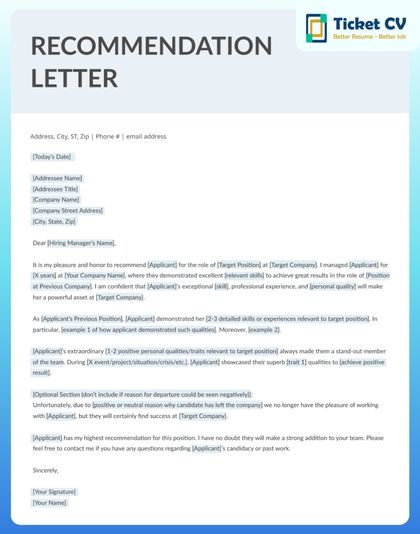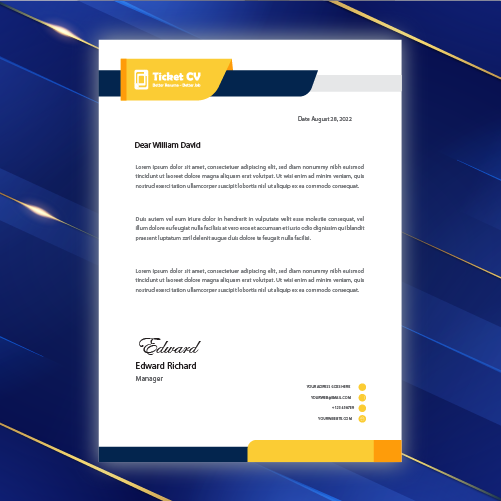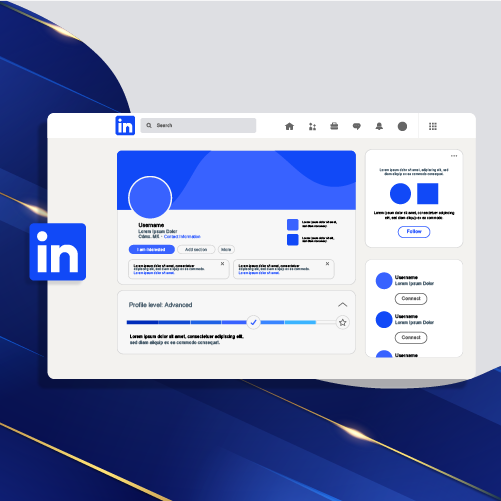Letter of Recommendation: Crafting Effective and Professional Letters 2024
A CV for a job search or a letter of recommendation is a vital introduction to the admissions process, offering a comprehensive overview of an individual’s counselor background and personal characteristics. A professional letter of recommendation is crucial in highlighting impactful experiences and involvement, emphasizing the relationship with the recommender, and providing contact information. When crafting a recommendation letter example or using a recommendation template, it’s important to showcase relevant experiences and maintain a professional tone. This article aims to underscore the significance of including details such as contact information and relationship context in the CV, as well as showcasing impactful experiences that validate the recommender’s statements. When crafting recommendation letters or using a recommendation template, it’s essential to consider a professional letter example for guidance. When preparing recommendation letters or using a recommendation template, it’s necessary to consider a professional letter example for advice. Furthermore, it emphasizes the qualities and characteristics that should be included in a recommendation letter to offer insight into the candidate’s potential fit for a role or program. Use a recommendation template to get ideas for your letter sample.
Contents
ToggleCrafting Effective Recommendations
Key Elements
When crafting a letter of recommendation for a job or school recipient, it is crucial to highlight the candidate’s strengths and accomplishments about their goals. This could include specific skills, personal qualities, or notable achievements that demonstrate their suitability for the job opportunity. For example, a professional letter of recommendation for the candidate’s name can provide a clear recommendation letter example.
Emphasizing the relevance to the job opportunity: The professional letter should explicitly connect the candidate’s attributes with the requirements of the company or school they are applying for. Aligning the candidate’s name and strengths from school with what the teacher is seeking reinforces their suitability for the job.
Maintaining a professional and respectful tone throughout is essential when writing recommendation letters for a job, teacher, or school. Using formal language and presenting information in a structured manner adds credibility to the teacher’s letter of recommendation job. The teacher needs to include a brag sheet to showcase their accomplishments.
Highlighting Skills
Showcasing the candidate’s unique skills and competencies is essential when writing a job recommendation letter for a teacher. A brag sheet helps showcase the candidate’s distinctive qualities and competitive edge. Whether it’s leadership abilities, problem-solving skills, or creativity, these should be highlighted in a job recommendation letter to provide a comprehensive view of the teacher’s capabilities. It’s essential to include the teacher’s name for personalization.
Aligning the teacher’s highlighted skills with the job requirements or program: The recommendation letter should directly correlate with what is being sought after in the opportunity. This alignment helps job decision-makers recognize how well-suited the teacher candidate is for the recommendation letter they are applying for under the name.
Using specific examples to illustrate the candidate’s skills, especially in a teacher’s recommendation letter: Incorporating particular instances where these skills were demonstrated effectively provides concrete evidence of their abilities. These recommendation letter examples from a teacher can add depth and credibility to your portrayal of the candidate.
Addressing Career Changes
Acknowledging career transitions or changes in direction: If there have been significant shifts in the candidate’s career path, acknowledging these changes demonstrates an understanding of their professional journey, especially when writing a teacher recommendation letter. It also shows an appreciation for adaptability and growth.
Emphasizing how this teacher’s career changes have positively influenced their development emphasizes resilience and adaptability – valuable traits that benefit any recommendation letter or program they pursue.
Demonstrating how a teacher’s past experiences are relevant to current opportunities: Connecting past experiences with present opportunities illustrates how diverse backgrounds contribute to a well-rounded skill set, which is essential for writing a recommendation letter. This demonstrates versatility and transferable skills that can be applied effectively in new contexts, making them an ideal candidate for a teacher recommendation letter.
Writing a Professional Letter
When recommending a teacher in a letter of recommendation, it is crucial to provide an engaging and informative overview of the candidate. Clearly stating the relationship between the teacher recommender and the candidate helps establish credibility for the recommendation letter. For instance, “I have had the pleasure of supervising Jane Doe, a dedicated teacher, for three years as her direct manager at XYZ Company. I am pleased to provide this recommendation letter.” This creates a context for the reader to understand the dynamics of their professional association.
Summarizing Experience
In summarizing the candidate’s experience, it is essential to concisely highlight their relevant work, academic background, and recommendation letter from a teacher. For example, “Jane consistently demonstrated exceptional leadership skills during her tenure as a teacher at our school, effectively managing a team of 15 individuals and exceeding project targets by 20%. I am pleased to provide this recommendation letter for her.” This demonstrates a clear understanding of the candidate’s professional journey while providing tangible examples of their contributions.
Concluding with Endorsement
Concluding the letter with an endorsement involves affirming confidence in the teacher candidate’s abilities and potential for success. An example could be, “I wholeheartedly endorse Jane for any teaching opportunity she pursues and believe she will continue to excel as a teacher in her future endeavors.” Expressing a willingness to provide further information if needed shows support for the teacher candidate beyond just the written letter.
Types of Recommendation Letters
Letter of recommendation from a manager
As a supervisor, a recommendation letter written by you holds a lot of weight.
It’s important that you learn how to write a recommendation letter for your employee so that it’s well-written, touches on all necessary information regarding the employee’s work performance and personal characteristics, and is as convincing as possible.
Here are four details you should keep in mind when writing an employee recommendation letter:
- Because companies take management seriously, you should mention whether or not you managed the person you’re recommending and for how long for.
- Give detailed examples of how the person you’re recommending used their skills and knowledge to benefit your company in an impressive way. Use hard numbers when describing your accomplishments.
- Ensure you include relevant skills and achievements for your employee’s target company or job.
- When describing the personality traits of the person you’re recommending, include those that help them contribute to a positive work environment and also enable them to succeed professionally.

Letter of recommendation from a coworker
It can be a little daunting when a colleague asks you to write a recommendation letter for them.
You may not know how to write a recommendation letter for your coworker and feel you’re not qualified to.
But rest assured, you’re capable and qualified. To help you write a thoughtful recommendation letter for your colleague, we’ve outlined five steps to focus on while writing:
- Create a strong base for your recommendation by outlining your working relationship. For example, perhaps you were on the same team or worked on certain projects together.
- Cite detailed examples of your colleague’s achievements and skills you witnessed firsthand.
- Highlight the positive aspects of their personality that make them a desirable person to work with.
- Emphasize the value of your colleague as an asset to their target company. Maintain a positive and enthusiastic tone throughout the letter.

Sample character reference letter for a friend
Writing a character reference letter (or personal reference letter) for a friend can be a tremendous aid in helping them land a job. However, figuring out precisely what to write can often be tricky.
To help you portray your friend’s character in the best way possible, here are four steps to follow when writing a personal reference letter:
- When writing a character reference for a friend, you’ll have less of a formal tone, but remember to keep your letter professional and polite.
- Highlight your friend’s skills and achievements outside of the workplace that would be useful for their target job.
- You’re likely intimately familiar with your friend’s personality, so ensure you highlight their positive character and personality traits.
- Additionally, describe how your friend’s positive personality traits would benefit the company in a professional setting.
LinkedIn recommendation sample (for a colleague)
Many people don’t know exactly how to write a recommendation for a colleague on LinkedIn.
At first glance, LinkedIn recommendation letters seem entirely different from a formal recommendation letter, but they’re essentially just a more concise version.
When writing a recommendation letter for a colleague on LinkedIn, focus on the following four points:
- Keep your recommendation letter concise. Employers browsing LinkedIn profiles want a good idea of a candidate’s strengths in as little time as possible.
- Consider what paragraphs you would include in a full letter, and then condense each into one or two sentences. For example: how you know the candidate, their professional strengths, and their positive personality traits.
- Make your recommendation personable. Tell a story that allows the employer to feel like they’re getting to know the candidate better.
- Don’t forget to include some examples that demonstrate the candidate’s abilities or traits you mention.
Requesting a Letter of Recommendation
Information for Recommenders
When requesting a letter of recommendation, it’s crucial to provide clear instructions to recommenders regarding the details that should be included in the letter. This ensures that the proposal aligns with the candidate’s goals and aspirations, as stated in the letter. For instance, the recommendation for a CV or job application should include specific examples of the candidate’s skills and accomplishments relevant to the position.
Guidance on maintaining confidentiality and professionalism when writing recommendation letters about candidates is essential. Recommenders should be reminded to adhere to ethical standards when writing a recommendation letter and avoid disclosing sensitive or personal information without consent. By emphasizing confidentiality in the recommendation letter, recommenders can build trust with potential employers or academic institutions.
It’s also important to outline specific requirements or formats for submitting a recommendation letter. This could include word count limits, preferred file formats (e.g., PDF), and where the letters should be sent. Providing this information upfront streamlines the process for both recommendation letter recommenders and candidates.
Ensuring Clarity
Using clear and concise language throughout the recommendation letter is paramount. Clear communication enhances understanding and ensures that the reader comprehends the candidate’s qualifications effectively, which is crucial when writing a recommendation letter. Straightforward language enables critical points about the candidate’s abilities to shine through when crafting a recommendation letter.
Avoiding ambiguity or vague statements is equally critical in ensuring clarity in a recommendation letter. Obscure words can diminish the impact of a letter as they fail to provide concrete evidence of a candidate’s strengths. Instead, recommenders should use specific examples and quantifiable achievements to bolster their assertions about the candidate in a recommendation letter.
Furthermore, ensuring that all points are easily understood by readers contributes significantly to a compelling recommendation letter. By structuring content logically and using language that resonates with broader audiences, recommenders can effectively convey why an individual is well-suited for writing a recommendation letter for a particular opportunity.
Importance for College Admissions
Characteristics of Winning Letters
Incorporating specific examples and anecdotes is crucial in creating a compelling letter of recommendation. Admissions officers are likelier to trust a recommendation letter when they can see tangible evidence of the candidate’s skills and character. For instance, citing how a student took on a leadership role in a group project or overcame significant challenges demonstrates their resilience and determination.
Balancing positivity with honesty is essential to present a well-rounded view of the candidate. While it’s important to highlight the strengths and accomplishments of the student, it’s equally vital to address areas where they have shown growth or potential. This balanced approach helps admissions officers gain a comprehensive understanding of the candidate.
Tailoring each letter to reflect genuine enthusiasm for endorsing the candidate is critical. When references express authentic excitement about advocating for the student, it adds credibility to their endorsement. Admissions officers are adept at identifying generic or insincere recommendations so that personalized enthusiasm can make a significant impact.
Personalizing the Story
Infusing personal anecdotes or memorable experiences involving the candidate can significantly enhance the impact of a letter of recommendation. For example, recounting how a student’s innovative solution positively impacted their community or school environment provides concrete evidence of their positive influence.
Demonstrating a deep understanding of how individual traits contribute to overall success showcases an insightful perspective in letters of recommendation. When references articulate how specific characteristics have contributed to the candidate’s achievements, it illustrates an acute awareness beyond surface-level observations.
Creating a narrative that resonates with readers while highlighting unique qualities is instrumental in capturing the attention of admissions officers. By crafting a story that showcases the student’s abilities and engages the reader emotionally, references can leave a lasting impression on those reviewing college applications.
Tailoring Letters for Different Purposes
Professional Employee Context
When crafting a letter of recommendation for a professional employee, it’s crucial to emphasize their professional growth, adaptability, and impact within organizational settings. Highlighting how the individual’s work-related experiences have shaped key competencies can provide valuable insight into their contributions. It’s essential to align recommendations with industry standards and expectations to showcase the candidate’s fit within the professional landscape.
Illustrating specific instances where the employee demonstrated adaptability in challenging work environments can add depth to the recommendation. For example, if an employee successfully leads a team through a significant organizational change, this demonstrates adaptability and leadership skills. Providing concrete examples of how individuals have positively impacted their workplace can further solidify their suitability for future roles.
Incorporating language that reflects industry-specific competencies and achievements can help align the recommendation with professional expectations. For example, in fields such as marketing or finance, highlighting measurable outcomes like successful campaign launches or revenue growth can effectively demonstrate the individual’s impact.
Students’ Academic Pursuits
When tailoring letters of recommendation for students’ academic pursuits, showcasing their intellectual curiosity, critical thinking abilities, and academic achievements is essential. Highlighting specific instances where students have gone above and beyond in pursuing knowledge or engaging in critical analysis can provide deeper insights into their academic potential.
Furthermore, emphasizing extracurricular activities, research projects or initiatives that demonstrate initiative outside of traditional coursework can illustrate a student’s holistic approach to learning. For instance, participation in science fairs, community service projects, or leadership roles within student organizations showcases students’ ability to apply classroom knowledge in real-world settings.
It is also crucial to illustrate how students’ academic pursuits have prepared them for future endeavors. This could involve discussing how specific academic achievements have equipped them with skills necessary for success in higher education or future careers. For instance, excelling in advanced placement courses may indicate a readiness for collegiate-level challenges.
Ensuring Letter Effectiveness
Credibility and Specificity
Backing up assertions with concrete examples, metrics, or tangible outcomes is essential when crafting a letter of recommendation for a CV. For instance, instead of stating that an individual is a strong leader, the letter should provide specific cases in which the person demonstrated exceptional leadership skills. This could include leading a team through a successful project, implementing innovative strategies that resulted in measurable improvements, or mentoring colleagues to achieve their professional goals. By doing so, the letter gains credibility and becomes more compelling to potential employers or academic institutions.
Avoiding vague generalizations by providing specific instances of excellence is crucial in ensuring the effectiveness of a letter of recommendation. Rather than using broad statements such as “excellent team player,” describing how the individual collaborated effectively within a team to accomplish a specific goal or project is more impactful. Including measurable outcomes, such as increased productivity or successful project completion, adds weight to the recommendation.
Establishing credibility through detailed accounts of observed behaviors or accomplishments is fundamental. When recommending someone for a position or opportunity, it’s important to illustrate why they are well-suited. This can be achieved by recounting specific instances where the individual’s actions directly contributed to positive outcomes within their previous roles. For example, if recommending someone for a leadership role, detailing how they successfully navigated challenging situations or inspired their team members can significantly enhance the credibility of the recommendation.
Positivity and Detail
Balancing positivity with factual evidence to support endorsements is critical in creating an effective letter of recommendation for a CV. While conveying enthusiasm and confidence in the recommended individual is essential, this positivity should be underpinned by concrete examples and achievements that validate these affirmations. Striking this balance ensures that the letter comes across as genuine and reliable.
Providing detailed descriptions of strengths, achievements, and contributions enriches the content of a recommendation letter. Instead of simply listing qualities or accomplishments without context, delving into specifics about how these strengths were demonstrated in real-world scenarios provides depth and authenticity to the endorsement.
Infusing enthusiasm while maintaining professionalism is crucial when composing letters of recommendation for CVs. The language should convey genuine admiration for the individual’s abilities while adhering to professional etiquette. An enthusiastic tone can help bring natural support for the candidate but must be tempered with professionalism to ensure that it aligns with formal communication standards.
Finalizing the Recommendation Letter
Impactful Closing Statements
Reiterating confidence in the candidate’s potential contributions is essential to leave a lasting impression. By summarizing the individual’s strengths and unique qualities, the recommender reaffirms their belief in the candidate’s ability to excel in future endeavors. This reiteration solidifies the positive image of the candidate in the reader’s mind.
Expressing gratitude for considering the recommendation adds a personal touch and demonstrates humility. It conveys appreciation for the opportunity to advocate for someone deserving, fostering goodwill between all involved parties. Gratitude also reflects positively on both the recommender and the endorsed individual.
Encouraging further dialogue or action regarding the endorsed individual signifies openness to providing additional information or discussing aspects not covered in the letter. This invitation prompts engagement and allows decision-makers to seek clarification or more details. It also shows a willingness to support and advocate for the candidate beyond just writing a letter.
Suggesting Appropriateness for Hire
It is crucial to articulate why hiring or admitting this individual would be beneficial based on their demonstrated qualities. Emphasizing specific skills, experiences, or character traits that align with what is sought after ensures that decision-makers recognize how well-suited the candidate is for the role or program. For instance, highlighting exceptional leadership abilities or problem-solving skills can effectively convey suitability.
Connecting specific attributes with potential contributions within a new role or program provides concrete examples of how the recommended individual can make an impact. By illustrating how their strengths directly translate into valuable contributions, decision-makers gain insight into what they can expect from bringing this person on board.
Encouraging decision-makers to consider seriously bringing this individual on board serves as a compelling call to action. Advocating strongly for their inclusion underscores confidence in their abilities and potential while urging those responsible to consider them.
Conclusion
Crafting effective recommendation letters is a crucial skill with far-reaching implications. Whether for college admissions or professional pursuits, the quality of these letters can significantly impact an individual’s opportunities. By understanding the nuances of writing tailored and impactful recommendations, one can elevate their support for candidates and contribute to their success.
As the demand for recommendation letters grows, mastering this art becomes increasingly valuable. With attention to detail and adherence to best practices, individuals can ensure that their notes carry the weight and credibility needed to make a positive difference in the lives of those they endorse.











